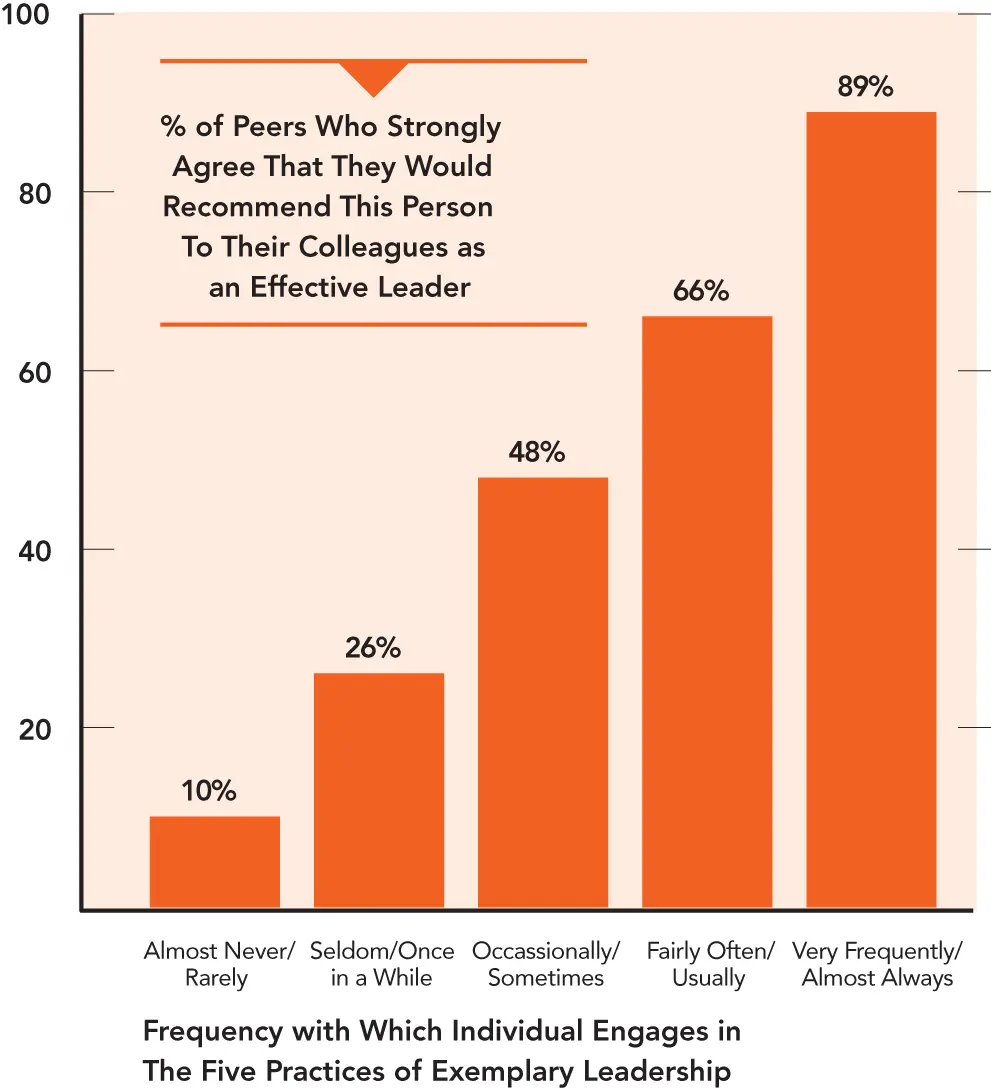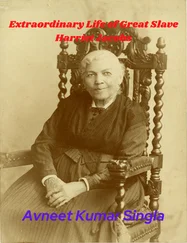Looking at the data just for those people who indicate they are “individual contributors” (as opposed to executives, middle managers, or supervisors) reveals the same pattern as these overall findings. In each of the subsequent chapters we present empirical evidence from their peers that further substantiates these results. * For example, there is a very strong correlation ( r = .67) between the likelihood of “being recommended to colleagues as a good leader” by one's peers and the frequency to which they observe the individual engaging in The Five Practices. As shown in Figure 1, the more frequently that one's colleagues and co-workers observe that person engaging in The Five Practices, the more strongly they agree that that individual is a good leader. This certainly makes sense. You can't be regarded as a leader if you don't behave as a leader.
So you don't have to be in a leadership position or have direct reports in order to make a difference to your colleagues and co-workers or to be seen as most effective by your manager. The bottom line empirically is that the more you utilize The Five Practices of Exemplary Leadership, the more likely it is that you'll have a positive influence on other people and the organization. That's what all our data and the scores of research conducted by independent scholars 11 add up to: If you want to have a significant impact on the people around you and the organizations you are involved with, you'd be wise to invest in learning the behaviors that enable you to become the very best leader you can.
While The Five Practices of Exemplary Leadership don't completely explain why leaders and their organizations are successful—which is actually good news because you should be very skeptical of anyone who promises perfection or offers a money-back guarantee—it is clear that engaging in them makes quite a difference no matter who you are, what you do, or where you are located. How you behave as a leader matters, and it matters a lot. You are the leader who makes the most difference in the lives of those you lead. And you are the one who has to determine how to match these practices and their associated behaviors to the settings and circumstances that you face. That's how you combine the art of leadership with mastery of the science of leadership.

Figure 1Likelihood of Being Recommended as a Good Leader by Peers Increases with Greater Frequency of Leadership Practices
In the next five chapters are detailed descriptions of what people do to Model the Way, Inspire a Shared Vision, Challenge the Process, Enable Others to Act, and Encourage the Heart. You will find stories and examples of people just like you who demonstrate each of these leadership practices, and we provide ideas, tools, and techniques that you can use on your leadership development journey.
As you read each of the chapters, keep in mind the key messages from this overview of our research on what people are doing when they are leading:
Leadership is not a position or hierarchical place or genetic trait
Leadership is a relationship
Leadership role models are local
Leadership is everyone's business
Credibility is the foundation of leadership
Leadership is an understandable, observable, and learnable set of behaviors and actions
You are already leading … and you can exercise leadership more frequently
Leadership makes a difference
You make a difference
In the next chapter we explain how you begin to earn the trust of the people around you. We show how you Model the Way by clarifying values and setting an example for others.
1 1McGirt, Ellen. “World's 50 greatest leaders,” Fortune, April 18, 2019. Accessed on March 18, 2020. https://fortune.com/worlds-greatest-leaders/2019/search/
2 2“New class: The Forum of Young Global Leaders.” The Forum of Young Global Leaders. Accessed on March 18, 2020. https://www.younggloballeaders.org/new-class
3 3Posner, B.Z. “When It Comes to Leadership, Who Are the Role Models?” Working paper, Leavey School of Business, Santa Clara University, 2020.
4 4Posner, B.Z. “The Influence of Demographic Factors on What People Want from Their Leaders,” Journal of Leadership Studies, 2018, 12(2), 7–16.
5 5Hovland, C.I., Janis, I.I., and Kelley, H.H. Communication and Persuasion. New Haven, CT: Yale University Press, 1953. Also see Cialdini, R. Influence: The Psychology of Persuasion. New York: Collins, 2007.
6 6Kouzes, J.M., and Posner, B.Z. Credibility: How Leaders Gain and Lose It, Why People Demand It (2nd ed.). Hoboken, NJ: The Leadership Challenge—A Wiley Brand, 2011.
7 7See, for example: Caza, A., Caza, B., and Posner, B.Z. “Transformational Leadership in Cultural Context: Follower Perception and Satisfaction,” Working paper, Leavey School of Business, Santa Clara University, 2020; Caza, A., and Posner, B.Z. “The Influence of Nationality on Followers' Satisfaction with Their Leaders,” Journal of Leadership, Accountability, and Ethics, 2017, 14(3), 53–62.
8 8For more information about these studies, you can find abstracts of over 800 of them on our website: https://www.leadershipchallenge.com/research/others-research.aspx. Also see Posner, B.Z. “Bringing the Rigor of Research to the Art of Leadership: Evidence Behind The Five Practices of Exemplary Leadership and the LPI: Leadership Practices Inventory.” http://www.leadershipchallenge.com/LeadershipChallenge/media/SiteFiles/research/our-research/tlc-our-research-bringing-the-rigor-of-research-to-the-art-of-leadership.pdf
9 9Kouzes, J.M., and Posner, B.Z. The Leadership Challenge: How to Make Extraordinary Things Happen in Organizations (6th ed.). Hoboken, NJ: The Leadership Challenge—A Wiley Brand, 2017.
10 10Kouzes, J.M., and Posner, B.Z. LPI: Leadership Practices Inventory (45th ed.). Hoboken, NJ: The Leadership Challenge—A Wiley Brand, 2017. https://www.leadershipchallenge.com/LeadershipChallenge/media/SiteFiles/resources/sample-reports/tlc-lpi-360-english-v5.pdf
11 11For more information about these studies, see our website: https://www.leadershipchallenge.com/research/others-research.aspx
12 *Unless otherwise indicated, when we refer to “data” we are using the results from the sample and analysis described in the Appendix. The sample generally involves the independent viewpoints of the co-workers and colleagues who were asked to provide feedback on the leadership behaviors of one of their peers. They completed the Observer version of the Leadership Practices Inventory, provided demographic information, answered various questions regarding their workplace attitudes, and offered assessment of the leadership effectiveness of their peer.
Конец ознакомительного фрагмента.
Текст предоставлен ООО «ЛитРес».
Прочитайте эту книгу целиком, купив полную легальную версию на ЛитРес.
Безопасно оплатить книгу можно банковской картой Visa, MasterCard, Maestro, со счета мобильного телефона, с платежного терминала, в салоне МТС или Связной, через PayPal, WebMoney, Яндекс.Деньги, QIWI Кошелек, бонусными картами или другим удобным Вам способом.













